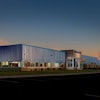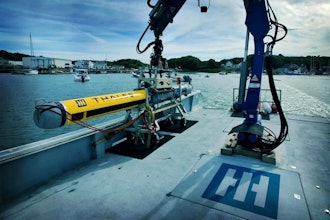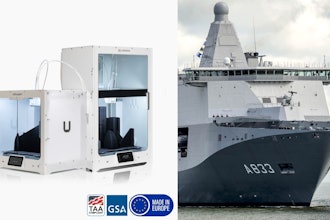Joblessness is falling, skilled workers are becoming harder to find and some American employers could be running out of skilled people to hire. It's one of those good/bad problems to have in a nation. Well, Japan has a similar issue as the country faces an aging population and declining birth rates that will lead to labor shortages across the board.
When it comes being short handed in the construction industry, Japan's National Institute of Advanced Industrial Science and Technology (AIST), has turned to robots to fill in the gaps.
Researchers recently unveiled the Human Robotics Platform (HRP)-5P prototype robot, which can perform tasks that are typically found on the job site, such as picking up a piece of drywall from a stack, moving it into position and and anchoring it to a wall. The HRP-5P is capable, but the prototype is incredibly slow and seeming thrown off balance every time it drives a screw.
The HRP-5P is nearly six-feet tall (182 cm) and weighs about 223 pounds (101 kg). The prototype is being designed to work autonomously at large structure assembly sites. Researchers have worked to improve the robot's ability to recognize and use objects, measure an environment, and they gave it a wider range of motion, including whole-body motion planning and control technology.
According to the researchers, the applications don't end at the construction site, as the technology could also be used to build aircraft and ships. Robots could also be a safer option as laborers at these job sites regularly carry out dangerous (and heavy) work.
AIST has been in the humanoid robotics game for awhile, the HRP program dates back to the HRP-1 built back in 1998 — they just tried to get that one to walk.
The HRP-2 not only improve bipedal walking, but also the ability to lie down and stand up.
The HRP-3 ushered in remote control, the ability to navigate slippery surfaces and to perform simple tasks like fastening a bolt. And the the HRP-4C, which was built for the entertainment industry, is a bit of a departure as it was developed to look like a young Japanese female that can make facial expressions, gestures and can even talk.
AIST researchers are developing humanoid robots because job sites haven't, and likely won’t, change in the near future. Even though industries struggle to find human workers, they're not exactly changing the job site to accommodate autonomous robot workers. Once the humanoid robots get up to speed, they will essentially be a plug-and-play solution.






















